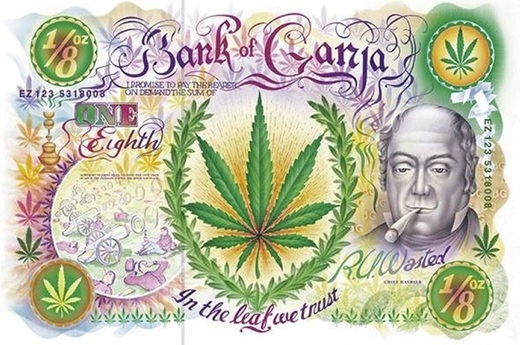
CNBC: “Marijuana & Money ” explores virtually every angle and aspect of the marijuana debate, from the economics of taxation and law enforcement; the likely business models of production and consumption; the lobbying effort and public health debate; professional and workplace issues; and, of course, the rapidly evolving world of legalized medical marijuana. Much of this you can track through individual state pages and a state-by-state tables. In some three dozen articles, videos and slideshows—and another dozen, diverse commentaries(pro, con and neutral) from major players and thought leaders in the arenas of politics and government, law, medicine, sociology, religion and entertainment— “Marijuana & Money” catches a country in clear transition and a debate in high gear. MORE
RELATED: Assuming the sale and possession of marijuana were actually legal, 62 percent of the 1,001 people surveyed by telephone in the early April poll favored taxing sales of the drug. Twenty-eight percent opposed. But the country apparently favors a low tax rate. The majority of respondents felt that a rate somewhere between 10 percent and 25 percent would be appropriate. MORE
RELATED: In the 2010 edition of “The Budgetary Implications of Drug Prohibition,” Jeffrey Miron, director of undergraduate studies at Harvard University, estimates that legalizing marijuana would save $13.7 billion per year in government expenditure on enforcement of prohibition. “Legalization  eliminates arrests for trafficking and possession,” Miron says. “Second, legalization saves judicial and incarceration expenses. Third, legalization allows taxation of drug production and sale.” Miron estimates that eight states each spend more than $1 billion annually enforcing marijuana laws: New York, $3 billion; Texas, $2 billion; California, Florida, $1.9 billion; Michigan, New Jersey, Ohio, Pennsylvania, $1 billion. Arizona—another border state—spends $726 million, while Colorado spends $145 million. North Dakota spends the least—$45 million a year—reflecting both its location and population density. The budget for the federal Drug Enforcement Administration has increased 40-fold since its inception in 1973, from $65 million (and 2,800 employees) to $2.6 billion (11,000) in 2009. MORE
eliminates arrests for trafficking and possession,” Miron says. “Second, legalization saves judicial and incarceration expenses. Third, legalization allows taxation of drug production and sale.” Miron estimates that eight states each spend more than $1 billion annually enforcing marijuana laws: New York, $3 billion; Texas, $2 billion; California, Florida, $1.9 billion; Michigan, New Jersey, Ohio, Pennsylvania, $1 billion. Arizona—another border state—spends $726 million, while Colorado spends $145 million. North Dakota spends the least—$45 million a year—reflecting both its location and population density. The budget for the federal Drug Enforcement Administration has increased 40-fold since its inception in 1973, from $65 million (and 2,800 employees) to $2.6 billion (11,000) in 2009. MORE
RELATED: The legalization of marijuana is no longer the unthinkable. On a state level, in California, for instance, it could be a reality later this year. Some 56 percent of people polled there already support the regulation and taxation of marijuana, ahead of a November public referendum to do just that. Medical marijuana is now legal in California and 13 other states, while more are considering it. The drug has been decriminalized in 13 states, and in Denver voters opted to legalize a small amount for personal consumption for those over 21 years old, even though Colorado law says otherwise. All of this is creating a legal thicket involving jurisdictional authority because on a federal level, marijuana is not legal in any way, shape or form. MORE
THE LAWRENCE WELK SINGERS: One Toke Over The Line
